- Navigator
- Real Estate Development and Housing
- Retail, Services, and Accommodations
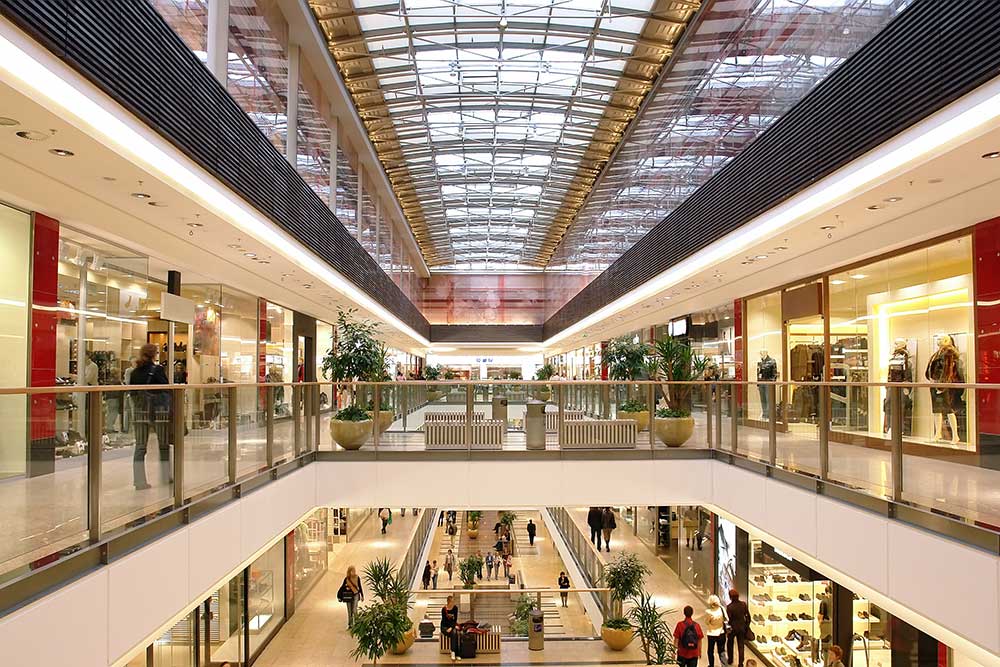 This article is the first installment in a four-part series examining the role and importance of shopping malls within the US economy and their popularity, decline, and revival.
This article is the first installment in a four-part series examining the role and importance of shopping malls within the US economy and their popularity, decline, and revival.
The shopping mall has had a significant impact on the US economy since the first completely enclosed mall, Southdale Regional Shopping Center, opened in Minneapolis in 1956. These economic impacts included:
- Retail Centralization: Malls provided a centralized location for a wide range of retail stores, offering convenience to consumers and creating opportunities for businesses to grow.
- Job Creation: The construction and operation of malls created jobs, both in the retail sector and in supporting industries like construction, maintenance, and security.
- Increased Tax Revenue: Malls generated property and sales tax revenue for local governments, contributing to public finances.
- Real Estate Development: Malls often stimulated further real estate development in the surrounding area, leading to increased property values and additional economic activity.
- Increased Consumer Spending: The cultural phenomenon of “going to the mall” encouraged consumer spending, boosting sales for retailers, restaurants, and entertainment establishments inside the malls.

Let’s Go to the Mall!
For Americans growing up in the 1980s, 1990s, and early 2000s, the shopping mall was a special place. In 1986, Consumer Reports included the shopping mall in its list of the top 50 most revolutionary consumer innovations, ranking them alongside things like antibiotics and personal computers.
There were many reasons a trip to the mall remained so popular for so long:
- Get Togethers: Malls were not just shopping destinations; they were also social hubs where friends and families would meet up.
- Entertainment: Malls often featured arcades, movie theaters, and food courts, providing a range of entertainment options for visitors.
- Fashion and Trends: Fashion enthusiasts flocked to malls to buy the latest fashion trends, spending hours exploring the racks of clothes and honing their personal styles.
- Music and Media: Malls served as hubs for music and movie enthusiasts, with stores selling records, cassettes, and CDs, VHS cassettes, and DVDs.
- Teen Hangouts: Malls were particularly popular among teenagers. It was a place where they could hang out with friends, flirt, and have independence.
- Holiday Traditions: Malls embraced holidays with elaborate decorations, Santa Claus and Easter Bunny visits, indoor trick or treating, and other seasonal events, becoming a part of many families’ traditions.
- Retail Diversity: Malls typically included a wide range of stores, from clothing boutiques to electronics shops, making them a convenient one-stop-shop for many consumer needs.
In addition to their economic and social importance, shopping malls held a prominent place in pop culture, showing up in board games, television series, films, and music, and leaving their imprint on fashion and lifestyle trends. Examples include:
- The “Mall Madness” board game (1988) captured the fun and excitement of a shopping spree in a board game format that represented a mall with various stores. You had to be the first player to purchase six items on your shopping list and return to your starting point to win.
- TV shows:
- The game show Shop ‘Til You Drop (1991) put contestants in a mall setting, where they had to compete in shopping-related challenges.
- While not released until 2016, the popular sci-fi Netflix series Stranger Things set in the 1980s features a mall prominently in its third season, capturing the nostalgia of the time.
- Movies:
- Fast Times at Ridgemont High (1982): The fictional “Ridgemont Mall” created the backdrop for several iconic scenes capturing teenage experiences, including shopping, working, and socializing.
- Mallrats (1995): The mall is the main place of this comedy where two friends decide to spend their day after they are both dumped by their girlfriends and come up with plans to win them back while running into misadventures and other quirky characters.
- Clueless (1995): The mall serves as a symbol of the affluent lifestyle and fashion-conscious culture of Beverly Hills teenagers in the 1990s. It highlighted the importance of fashion, status, and social connections in their world.
- Malls were used as concert venues to help promote emerging artists like Tiffany in 1987 and Britney Spears in 1998.
The way malls were portrayed in these diverse media outlets reflects their cultural importance during those years. They were not just places for shopping; they were also hubs for socializing and creating lasting memories.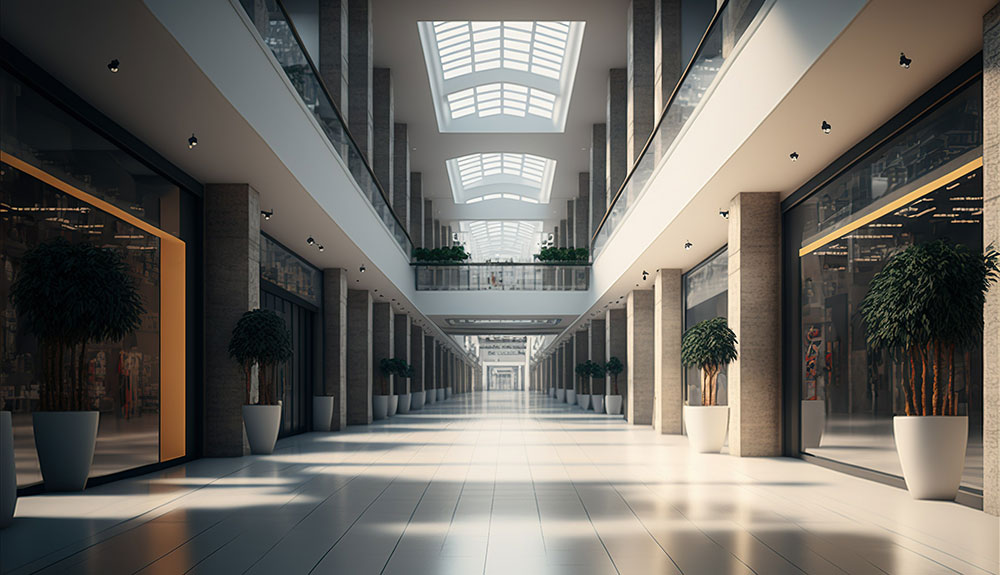
The Retail Apocalypse
While malls were once major drivers of retail growth and economic vitality, they have faced several challenges in recent decades. Many malls have struggled, leading to store closures and mall vacancies. As shown in the chart below, which was published by the Financial Times in January 2020, US shopping mall vacancies hit a 20-year high just prior to the COVID-19 pandemic.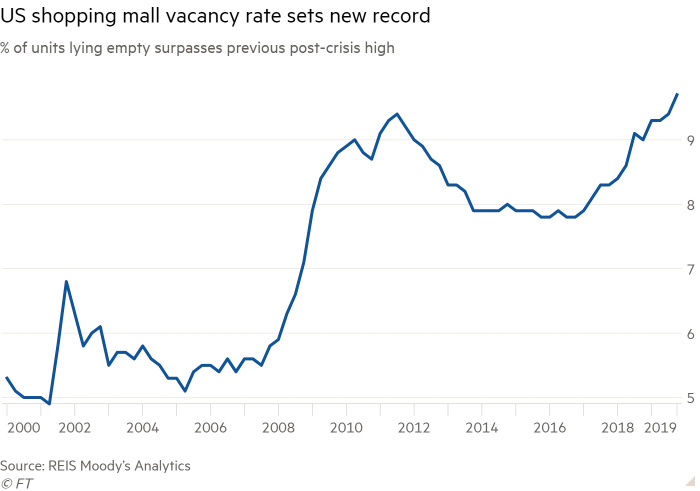 The decline in mall popularity over the years can be attributed to several significant factors, including:
The decline in mall popularity over the years can be attributed to several significant factors, including:
- Changing consumer preferences, including the rise in e-commerce giants like Amazon and the convenience of shopping online.
- The growth in alternative shopping and entertainment options.
- Economic influences, including a shift from mid-priced and upscale brands to discount retailers like Walmart, Costco, Ross, Dollar General, TJ Maxx, and Five Below.
- Some malls have become outdated in terms of design and amenities, making them less appealing to modern shoppers who seek a more contemporary and comfortable environment.
The impact of these factors has varied by location and the individual mall. Some malls have been more resilient or have adapted successfully to these challenges, while others have faced more significant declines.
 In the 1990s, e-commerce began to emerge, with the launch of online marketplaces like Amazon in 1995. Although online shopping was still in its infancy, it began to alter retail dynamics.
In the 1990s, e-commerce began to emerge, with the launch of online marketplaces like Amazon in 1995. Although online shopping was still in its infancy, it began to alter retail dynamics.
During the 2000s, online shopping kept growing, and the dot-com bubble bursting showed big shifts in retail. However, it was in the mid-2000s when malls faced an even bigger, self-made problem. There was a boom in mall construction, leading to oversaturation of the market. Many malls faced increased competition and struggled to attract tenants and shoppers. The Great Recession of 2008-2009 had a further negative impact on consumer spending, leading to compounded financial difficulties for some malls.
Throughout the 2010s, many malls had to deal with the closure of anchor stores like Sears, Macy’s, and J.C. Penney. Filling these empty spaces became a challenge for mall operators, and declining foot traffic and sales became common problems with fewer people visiting the mall.
The 2020s brought further disruption, as the COVID-19 pandemic-related lockdowns and health concerns kept people away from malls and accelerated the popularity of online shopping.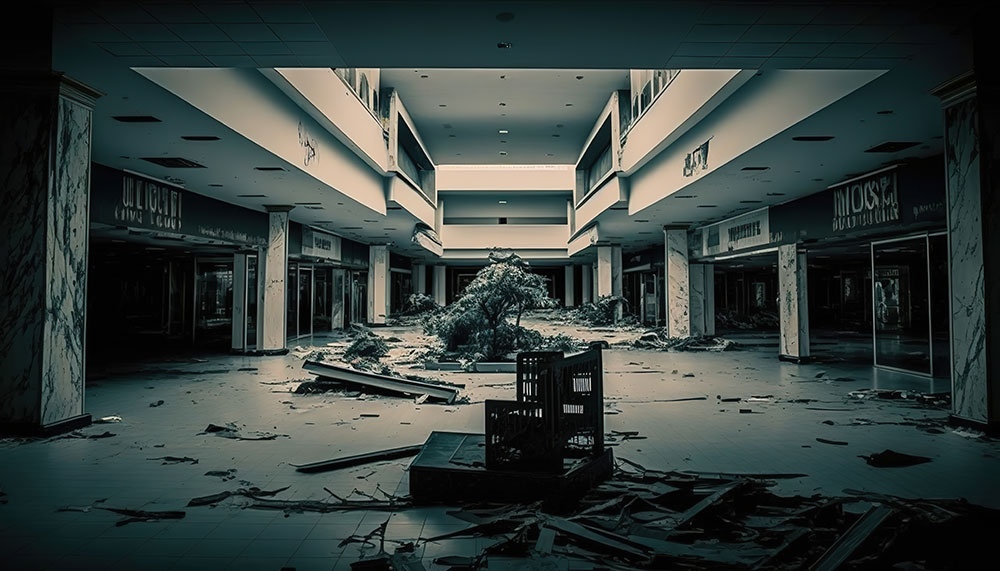
Did the Shopping Mall Really Die?
If you watched Dead Mall, a documentary TV series that premiered in 2014, your answer would probably be “yes.” The series took visitors on virtual tours of stores and shopping centers that went out of business during the early-to-mid-2010s, and its website, www.deadmalls.com, features a list of nearly 450 dead or dying shopping malls across the US, many with pictures and historical narratives.
While the traditional concept of shopping malls has faded over the years, leading some to be labeled as “dead malls,” others have found innovative ways to adapt to the changing retail landscape.
Since mall properties were designed to accommodate many tenants and uses, they have the square footage, parking, and infrastructure necessary to accommodate a diverse range of non-retail functions. This makes them ideally suited to bring together a new collection of commercial, retail, and lifestyle functions within a centralized location, often without the need to demolish the existing structure, including:
- Office and commercial spaces for telecommunications carriers, data center operators, and Internet service providers
- Healthcare clinics, fitness centers, pharmacies, and other wellness facilities (aka, “Health Malls” or “Mall to Medicine”)
- Government and civic services, including Department of Motor Vehicles registration renewal centers and post offices
- Satellite education centers and urban technology and research centers
- Multi-family residential housing, including condos, rental apartments, and affordable housing
- Logistics and storage facilities such as fulfillment centers for online retailers, grocery delivery services, mini-storage, and warehousing
- Cultural and entertainment venues including aquariums, escape rooms, community festivals, haunted houses, libraries, and theater and concert performance spaces
- Churches and community centers
- Hotels and other mixed-use areas
- Unique food courts featuring small locally-owned restaurants
This adaptability demonstrates that, rather than fading away, malls are embracing new roles, emphasizing experiences, entertainment, and services beyond traditional retail, such as restaurants, fitness centers, and healthcare facilities. Others have even evolved into mixed-use developments or transformed into fulfillment centers for online retailers.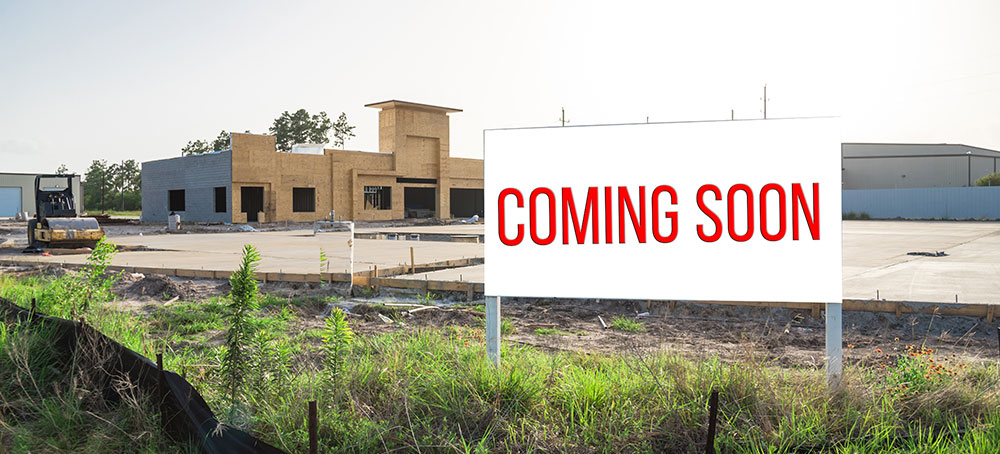
Why Redevelopment?
Mall redevelopment not only addresses the challenges of declining malls but can also stimulate the local economy in the following ways:
- Economic Revitalization: Redeveloping a failing, or vacant mall can breathe new life into an underutilized property, transforming it back into a vibrant economic hub.
- Job Creation: Redevelopment projects often require significant labor and construction work, leading to the creation of jobs in the construction and renovation phases. Once the redevelopment is complete, new businesses within the mall also generate employment opportunities.
- Increased Tax Revenue: A thriving mall or mixed-use development generates increased property and/or sales tax revenue for local governments.
- Attracting New Businesses: A redeveloped mall with a mix of commercial, office, and residential spaces can attract new businesses, startups, and entrepreneurs. This can lead to a more diverse and robust local economy.
- Improved Property Values: Successful mall redevelopment can have a positive spillover effect on property values in the surrounding area, encouraging homeowners and businesses to invest in the community.
- Consumer Spending: Redeveloped malls offer a variety of amenities and services, attracting more visitors and encouraging consumer spending.
- Diversification of Land Use: Transforming a mall into a mixed-use development that includes residential, commercial, and recreational spaces diversifies the land use. This reduces dependence on a single type of use, making the local economy more resilient.
- Community Appeal: Redevelopment projects often include community spaces, parks, cultural venues, and entertainment facilities. These amenities enhance the quality of life for residents and make the area more attractive to potential residents and businesses.
- Adaptive Reuse: Redeveloping malls through adaptive reuse preserves existing structures and reduces the environmental impact associated with demolishing and rebuilding. It can be a more sustainable approach to development.
- Tourism and Destination Appeal: Successful mall redevelopments can become destinations, attracting tourists and visitors from neighboring regions, which can lead to increased tourism-related revenue for the local economy.
Where I grew up in Richmond, VA, there were four primary indoor shopping malls: Willow Lawn Shopping Center, Regency Square Mall, Virginia Center Commons, and Chesterfield Town Center. While one of these appears to have withstood the “Death of the American Mall” trend, the other three have undergone redevelopment to remain relevant in the evolving retail landscape.
In the upcoming articles in this series, I will take a closer look at each of these Richmond-area malls, discussing their history and current transformations, and highlighting other US malls that are also undergoing similar changes.
Additional Reading:
- “‘Death of the Mall is Widely Exaggerated’: Shopping Malls See Resurgence Post-COVID Report Shows” (USA Today | August 28, 2023)
- “The Glory Days of the American Mall” (Wall Street Journal | April 29, 2023)
- “The Rise and Fall of the American Shopping Mall” (Business Insider | January 6, 2023)
- “Why the Death of Malls Is About More Than Shopping” (Time magazine | July 20, 2017)
- “The Rise and Fall of the US Mall” (World Finance)
Related Videos:
The Rise and Fall of the Mall (Insider Business | July 23, 2020)
The Rise and Fall of American Malls (Bloomberg Originals | April 14, 2021)




